-

Sep
29
Report concludes fraud likely occurred in Coronavirus Food Assistance Program

The United States Government Accountability Office (GAO) recently published the results of an investigation into the United States Department of Agriculture’s (USDA’s) Coronavirus Food Assistance Program (CFAP), noting fraud is likely. During the pandemic, USDA through the CFAP provided producers with $31 billion for various commodities.
Read more
-

Sep
29
Memorandum on increasing access to federally funded research introduced

The White House Office of Science and Technology Policy (OSTP) issued a memorandum directing federal agencies to ensure peer-reviewed articles originating from federally funded research are freely available upon publication. This guidance is to be implemented no later than the start of 2026 and applies to data that is necessary to validate scientific findings reported in the publications.
Read more
-

Sep
29
Global beef market remains strong, new report finds
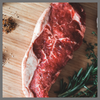
According to a new report by Rabobank, the third quarter outlook for the global beef market remains robust. Most beef retail prices continued their upward trend in quarter two or remained steady.
Read more
-

Sep
29
Congress members ask USDA to delay poultry plant safety study
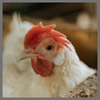
Representative Andrew Clyde (R-GA), along with 34 members of Congress sent a letter to the United States Department of Agriculture (USDA), Agriculture Secretary Tom Vilsack, requesting the USDA to postpone a poultry plant safety study. The letter contains a list of over 20 questions the congressmen would like answered before September 30th.
Read more
-

Sep
29
Agriculture organizations urge Senate to pass Livestock Regulatory Protection Act
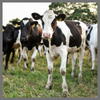
The Livestock Regulatory Protection Act would ban the Environmental Protection Agency (EPA) from issuing permits under the Clean Air Act for any carbon dioxide, nitrogen oxide, water vapor, or methane emissions resulting from biological processes associated with livestock production. While the EPA has not proposed any so-called “cow-taxes” on greenhouse emissions from livestock operations, there is a concern that a move in that direction could be imminent.
Read more
-

Sep
23
Overview of the EAAP (ASAS Sponsored) Symposium focusing on the relationship between nutrition and reproduction in cattle
ASAS and EAAP are long term partners. In September of 2022, ASAS Sent 14 speakers to give presentations at the 2022 EAAP meeting. Here you can read a few highlights from speakers and ASAS Sponsored symposia.
Read more
-

Sep
23
Rethinking Methane from Animal Agriculture: ASAS Speaker Frank Mitloehner at EAAP
Predicting how greenhouse gases can warm the planet is critical to finding short- and long-term solutions to global warming. At the European Federation of Animal Sciences meeting in Porto, Portugal, September 5-9, 2022, ASAS member, Frank Mitloehner from the University of California – Davis, discussed why we should rethink how methane from animal agriculture impacts global warming.
Read more
-

Sep
23
Effective Nutritional Strategies to Mitigate Enteric Methane in Dairy Cattle: ASAS Member Alex Hristov at EAAP
Research over the past decade have provided critical information on the factors that drive enteric methane emission in ruminants. At the European Federation of Animal Sciences meeting in Porto, Portugal, September 5-9, 2022, ASAS member, Alexander Hristov from Pennsylvania State University focused on nutritional strategies that can mitigate enteric methane emissions.
Read more
-

Sep
22
Interpretive Summary: Nitrogen excretion from beef cattle fed a wide range of diets compiled in an intercontinental dataset: a meta-analysis
.png?sfvrsn=e5f152d1_0)
Ruminants play a key role in the food system because they can convert fiber-rich plants into highly nutritious food for humans. However, there is a growing concern about livestock production because of its negative environmental impact, mainly due to enteric methane (CH4) emissions but also as a result of N excretion leading to nitrate (NO3−) leaching and ammonia (NH3) and nitrous oxide (N2O) emissions.
Read more
-

Sep
22
Interpretive Summary: Substituting ryegrass-based pasture with graded levels of forage rape in the diet of lambs decreases methane emissions and increases propionate, succinate, and primary alcohols in the rumen
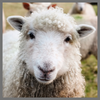
The methane yield (g methane/kg dry matter intake) was 34% lower in sheep fed 100% forage rape and 11% lower in sheep fed 75% forage rape compared to sheep fed 100% ryegrass-based pasture. Sheep fed 25% and 50% forage rape as part of their diet had similar methane yields to sheep fed 100% ryegrass pasture.
Read more
-

Sep
22
Interpretive Summary: Economic analysis of biosecurity adoption in dairy farming: evidence from Ireland
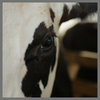
Given the significant negative impact of livestock disease outbreaks on animal and public health, preventing disease spread through biosecurity practices is important. In this article, we assessed the economic implications of the adoption of biosecurity practices on Irish dairy farms.
Read more
-

Sep
22
Interpretive Summary: Transcriptome analysis reveals candidate genes of the synthesis of branched-chain fatty acids related to mutton flavor in the lamb liver using Allium mongolicum Regel extract
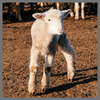
Mutton is characterized by a typical species-related flavor named “mutton flavor,” which is mainly associated with branched-chain fatty acids (BCFAs), such as 4-methyloctanoic acid, 4-ethyloctanoic acid, and 4-methylnonanoic acid. Previous studies demonstrated that Allium mongolicum Regel ethanol extract (AME) reduced the concentration of BCFAs in the muscle and adipose tissues of lambs.
Read more
-

Sep
22
Interpretive Summary: Copy number variation of ZNF280BY across eight sheep breeds and its association with testicular size of Hu sheep
.png?sfvrsn=c0f152d1_0)
The zinc finger protein 280B-like, Y-linked ZNF280BY is a bovid-specific Y chromosome gene, playing important roles in testicular development and male fertility. In this study, we found that the ovine ZNF280BY was highly expressed in the testis and significantly upregulated during testicular development.
Read more
-

Sep
22
Interpretive Summary: The effects of heat stress on milk production and the grazing behavior of dairy Holstein cows milked by an automatic milking system
.png?sfvrsn=9cf152d1_0)
In higher temperature conditions, dairy cows under pasture-based automatic milking systems may experience heat stress, affecting their health and productive performance. In the present study, the relationships between heat stress, measured by the temperature–humidity index (THI), productive traits, and grazing behaviors were evaluated.
Read more
-

Sep
22
Interpretive Summary: How copper can impact pig growth: comparing the effect of copper sulfate and monovalent copper oxide on oxidative status, inflammation, gene abundance, and microbial modulation as potential mechanisms of action
.png?sfvrsn=86f152d1_0)
Copper is a nonrenewable mineral resource that is essential for all biological organisms. After banning the antibiotics, copper has received considerable attention due to its antimicrobial properties that improve performance in animals when fed over the minimum requirement.
Read more
-

Sep
15
Interpretive Summary: Acute stress deteriorates breast meat quality of Ross 308 broiler chickens by inducing redox imbalance and mitochondrial dysfunction
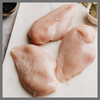
Preslaughter acute stress can cause physiological and metabolic disorders of broilers and lead to deterioration of meat quality and high incidence of pale, soft, and exudative (PSE)-like meat, which block the development of broiler industry. Acute stress-induced imbalance of redox status and insufficient energy supply are important reasons for meat quality reduction.
Read more
-

Sep
15
Interpretive Summary: Weak genotype x environment interaction suggests that measuring scrotal circumference at 12 and 18 mo of age is helpful to select precocious Brahman cattle
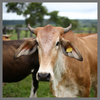
Beef production systems rely on efficient cow-calf operations, that is, farms where the cow herd has a high level of fertility and pregnancies are common. Bull fertility also plays an important role in terms of pregnancy rates.
Read more
-

Sep
15
Interpretive Summary: Genetic architecture of a composite beef cattle population
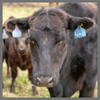
Composite breeds are commonly used in the U.S. beef industry since they provide producers with benefits such as breed complementarity and retained heterosis. However, cattle composite genomes are not well characterized.
Read more
-

Sep
15
Interpretive Summary: Correcting for base-population differences and unknown parent groups in single-step genomic predictions of Norwegian Red cattle
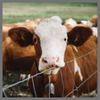
Our study dealt with strategies on how to reduce biases (inflation and level-bias) and improve a parameter related to accuracy (stability) of genomic predictions of breeding values that combine genotyped and non-genotyped animals, which are denoted as single-step genomic predictions.
Read more
-

Sep
15
Interpretive Summary: Feeding a high-energy finishing diet upon arrival to high-risk feedlot calves: effects on health, performance, ruminal pH, rumination, serum metabolites, and carcass traits
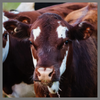
When high-risk cattle arrive at the feedlot, they have low feed consumption and a greater risk for disease because of stress, inflammation, and exposure to pathogens. Because of reduced feed consumption, newly arrived cattle may not be able to meet their energy requirement for growth during the first several weeks after feedlot arrival.
Read more
 SepReport concludes fraud likely occurred in Coronavirus Food Assistance Program
SepReport concludes fraud likely occurred in Coronavirus Food Assistance Program The United States Government Accountability Office (GAO) recently published the results of an investigation into the United States Department of Agriculture’s (USDA’s) Coronavirus Food Assistance Program (CFAP), noting fraud is likely. During the pandemic, USDA through the CFAP provided producers with $31 billion for various commodities.
The United States Government Accountability Office (GAO) recently published the results of an investigation into the United States Department of Agriculture’s (USDA’s) Coronavirus Food Assistance Program (CFAP), noting fraud is likely. During the pandemic, USDA through the CFAP provided producers with $31 billion for various commodities. SepMemorandum on increasing access to federally funded research introduced
SepMemorandum on increasing access to federally funded research introduced The White House Office of Science and Technology Policy (OSTP) issued a memorandum directing federal agencies to ensure peer-reviewed articles originating from federally funded research are freely available upon publication. This guidance is to be implemented no later than the start of 2026 and applies to data that is necessary to validate scientific findings reported in the publications.
The White House Office of Science and Technology Policy (OSTP) issued a memorandum directing federal agencies to ensure peer-reviewed articles originating from federally funded research are freely available upon publication. This guidance is to be implemented no later than the start of 2026 and applies to data that is necessary to validate scientific findings reported in the publications. SepGlobal beef market remains strong, new report finds
SepGlobal beef market remains strong, new report finds According to a new report by Rabobank, the third quarter outlook for the global beef market remains robust. Most beef retail prices continued their upward trend in quarter two or remained steady.
According to a new report by Rabobank, the third quarter outlook for the global beef market remains robust. Most beef retail prices continued their upward trend in quarter two or remained steady. SepCongress members ask USDA to delay poultry plant safety study
SepCongress members ask USDA to delay poultry plant safety study Representative Andrew Clyde (R-GA), along with 34 members of Congress sent a letter to the United States Department of Agriculture (USDA), Agriculture Secretary Tom Vilsack, requesting the USDA to postpone a poultry plant safety study. The letter contains a list of over 20 questions the congressmen would like answered before September 30th.
Representative Andrew Clyde (R-GA), along with 34 members of Congress sent a letter to the United States Department of Agriculture (USDA), Agriculture Secretary Tom Vilsack, requesting the USDA to postpone a poultry plant safety study. The letter contains a list of over 20 questions the congressmen would like answered before September 30th. SepAgriculture organizations urge Senate to pass Livestock Regulatory Protection Act
SepAgriculture organizations urge Senate to pass Livestock Regulatory Protection Act The Livestock Regulatory Protection Act would ban the Environmental Protection Agency (EPA) from issuing permits under the Clean Air Act for any carbon dioxide, nitrogen oxide, water vapor, or methane emissions resulting from biological processes associated with livestock production. While the EPA has not proposed any so-called “cow-taxes” on greenhouse emissions from livestock operations, there is a concern that a move in that direction could be imminent.
The Livestock Regulatory Protection Act would ban the Environmental Protection Agency (EPA) from issuing permits under the Clean Air Act for any carbon dioxide, nitrogen oxide, water vapor, or methane emissions resulting from biological processes associated with livestock production. While the EPA has not proposed any so-called “cow-taxes” on greenhouse emissions from livestock operations, there is a concern that a move in that direction could be imminent. SepOverview of the EAAP (ASAS Sponsored) Symposium focusing on the relationship between nutrition and reproduction in cattle
SepOverview of the EAAP (ASAS Sponsored) Symposium focusing on the relationship between nutrition and reproduction in cattle SepRethinking Methane from Animal Agriculture: ASAS Speaker Frank Mitloehner at EAAP
SepRethinking Methane from Animal Agriculture: ASAS Speaker Frank Mitloehner at EAAP SepEffective Nutritional Strategies to Mitigate Enteric Methane in Dairy Cattle: ASAS Member Alex Hristov at EAAP
SepEffective Nutritional Strategies to Mitigate Enteric Methane in Dairy Cattle: ASAS Member Alex Hristov at EAAP SepInterpretive Summary: Nitrogen excretion from beef cattle fed a wide range of diets compiled in an intercontinental dataset: a meta-analysis
SepInterpretive Summary: Nitrogen excretion from beef cattle fed a wide range of diets compiled in an intercontinental dataset: a meta-analysis.png?sfvrsn=e5f152d1_0) Ruminants play a key role in the food system because they can convert fiber-rich plants into highly nutritious food for humans. However, there is a growing concern about livestock production because of its negative environmental impact, mainly due to enteric methane (CH4) emissions but also as a result of N excretion leading to nitrate (NO3−) leaching and ammonia (NH3) and nitrous oxide (N2O) emissions.
Ruminants play a key role in the food system because they can convert fiber-rich plants into highly nutritious food for humans. However, there is a growing concern about livestock production because of its negative environmental impact, mainly due to enteric methane (CH4) emissions but also as a result of N excretion leading to nitrate (NO3−) leaching and ammonia (NH3) and nitrous oxide (N2O) emissions. SepInterpretive Summary: Substituting ryegrass-based pasture with graded levels of forage rape in the diet of lambs decreases methane emissions and increases propionate, succinate, and primary alcohols in the rumen
SepInterpretive Summary: Substituting ryegrass-based pasture with graded levels of forage rape in the diet of lambs decreases methane emissions and increases propionate, succinate, and primary alcohols in the rumen The methane yield (g methane/kg dry matter intake) was 34% lower in sheep fed 100% forage rape and 11% lower in sheep fed 75% forage rape compared to sheep fed 100% ryegrass-based pasture. Sheep fed 25% and 50% forage rape as part of their diet had similar methane yields to sheep fed 100% ryegrass pasture.
The methane yield (g methane/kg dry matter intake) was 34% lower in sheep fed 100% forage rape and 11% lower in sheep fed 75% forage rape compared to sheep fed 100% ryegrass-based pasture. Sheep fed 25% and 50% forage rape as part of their diet had similar methane yields to sheep fed 100% ryegrass pasture. SepInterpretive Summary: Economic analysis of biosecurity adoption in dairy farming: evidence from Ireland
SepInterpretive Summary: Economic analysis of biosecurity adoption in dairy farming: evidence from Ireland Given the significant negative impact of livestock disease outbreaks on animal and public health, preventing disease spread through biosecurity practices is important. In this article, we assessed the economic implications of the adoption of biosecurity practices on Irish dairy farms.
Given the significant negative impact of livestock disease outbreaks on animal and public health, preventing disease spread through biosecurity practices is important. In this article, we assessed the economic implications of the adoption of biosecurity practices on Irish dairy farms. SepInterpretive Summary: Transcriptome analysis reveals candidate genes of the synthesis of branched-chain fatty acids related to mutton flavor in the lamb liver using Allium mongolicum Regel extract
SepInterpretive Summary: Transcriptome analysis reveals candidate genes of the synthesis of branched-chain fatty acids related to mutton flavor in the lamb liver using Allium mongolicum Regel extract Mutton is characterized by a typical species-related flavor named “mutton flavor,” which is mainly associated with branched-chain fatty acids (BCFAs), such as 4-methyloctanoic acid, 4-ethyloctanoic acid, and 4-methylnonanoic acid. Previous studies demonstrated that Allium mongolicum Regel ethanol extract (AME) reduced the concentration of BCFAs in the muscle and adipose tissues of lambs.
Mutton is characterized by a typical species-related flavor named “mutton flavor,” which is mainly associated with branched-chain fatty acids (BCFAs), such as 4-methyloctanoic acid, 4-ethyloctanoic acid, and 4-methylnonanoic acid. Previous studies demonstrated that Allium mongolicum Regel ethanol extract (AME) reduced the concentration of BCFAs in the muscle and adipose tissues of lambs. SepInterpretive Summary: Copy number variation of ZNF280BY across eight sheep breeds and its association with testicular size of Hu sheep
SepInterpretive Summary: Copy number variation of ZNF280BY across eight sheep breeds and its association with testicular size of Hu sheep.png?sfvrsn=c0f152d1_0) The zinc finger protein 280B-like, Y-linked ZNF280BY is a bovid-specific Y chromosome gene, playing important roles in testicular development and male fertility. In this study, we found that the ovine ZNF280BY was highly expressed in the testis and significantly upregulated during testicular development.
The zinc finger protein 280B-like, Y-linked ZNF280BY is a bovid-specific Y chromosome gene, playing important roles in testicular development and male fertility. In this study, we found that the ovine ZNF280BY was highly expressed in the testis and significantly upregulated during testicular development. SepInterpretive Summary: The effects of heat stress on milk production and the grazing behavior of dairy Holstein cows milked by an automatic milking system
SepInterpretive Summary: The effects of heat stress on milk production and the grazing behavior of dairy Holstein cows milked by an automatic milking system.png?sfvrsn=9cf152d1_0) In higher temperature conditions, dairy cows under pasture-based automatic milking systems may experience heat stress, affecting their health and productive performance. In the present study, the relationships between heat stress, measured by the temperature–humidity index (THI), productive traits, and grazing behaviors were evaluated.
In higher temperature conditions, dairy cows under pasture-based automatic milking systems may experience heat stress, affecting their health and productive performance. In the present study, the relationships between heat stress, measured by the temperature–humidity index (THI), productive traits, and grazing behaviors were evaluated. SepInterpretive Summary: How copper can impact pig growth: comparing the effect of copper sulfate and monovalent copper oxide on oxidative status, inflammation, gene abundance, and microbial modulation as potential mechanisms of action
SepInterpretive Summary: How copper can impact pig growth: comparing the effect of copper sulfate and monovalent copper oxide on oxidative status, inflammation, gene abundance, and microbial modulation as potential mechanisms of action.png?sfvrsn=86f152d1_0) Copper is a nonrenewable mineral resource that is essential for all biological organisms. After banning the antibiotics, copper has received considerable attention due to its antimicrobial properties that improve performance in animals when fed over the minimum requirement.
Copper is a nonrenewable mineral resource that is essential for all biological organisms. After banning the antibiotics, copper has received considerable attention due to its antimicrobial properties that improve performance in animals when fed over the minimum requirement. SepInterpretive Summary: Acute stress deteriorates breast meat quality of Ross 308 broiler chickens by inducing redox imbalance and mitochondrial dysfunction
SepInterpretive Summary: Acute stress deteriorates breast meat quality of Ross 308 broiler chickens by inducing redox imbalance and mitochondrial dysfunction Preslaughter acute stress can cause physiological and metabolic disorders of broilers and lead to deterioration of meat quality and high incidence of pale, soft, and exudative (PSE)-like meat, which block the development of broiler industry. Acute stress-induced imbalance of redox status and insufficient energy supply are important reasons for meat quality reduction.
Preslaughter acute stress can cause physiological and metabolic disorders of broilers and lead to deterioration of meat quality and high incidence of pale, soft, and exudative (PSE)-like meat, which block the development of broiler industry. Acute stress-induced imbalance of redox status and insufficient energy supply are important reasons for meat quality reduction. SepInterpretive Summary: Weak genotype x environment interaction suggests that measuring scrotal circumference at 12 and 18 mo of age is helpful to select precocious Brahman cattle
SepInterpretive Summary: Weak genotype x environment interaction suggests that measuring scrotal circumference at 12 and 18 mo of age is helpful to select precocious Brahman cattle Beef production systems rely on efficient cow-calf operations, that is, farms where the cow herd has a high level of fertility and pregnancies are common. Bull fertility also plays an important role in terms of pregnancy rates.
Beef production systems rely on efficient cow-calf operations, that is, farms where the cow herd has a high level of fertility and pregnancies are common. Bull fertility also plays an important role in terms of pregnancy rates. SepInterpretive Summary: Genetic architecture of a composite beef cattle population
SepInterpretive Summary: Genetic architecture of a composite beef cattle population Composite breeds are commonly used in the U.S. beef industry since they provide producers with benefits such as breed complementarity and retained heterosis. However, cattle composite genomes are not well characterized.
Composite breeds are commonly used in the U.S. beef industry since they provide producers with benefits such as breed complementarity and retained heterosis. However, cattle composite genomes are not well characterized. SepInterpretive Summary: Correcting for base-population differences and unknown parent groups in single-step genomic predictions of Norwegian Red cattle
SepInterpretive Summary: Correcting for base-population differences and unknown parent groups in single-step genomic predictions of Norwegian Red cattle Our study dealt with strategies on how to reduce biases (inflation and level-bias) and improve a parameter related to accuracy (stability) of genomic predictions of breeding values that combine genotyped and non-genotyped animals, which are denoted as single-step genomic predictions.
Our study dealt with strategies on how to reduce biases (inflation and level-bias) and improve a parameter related to accuracy (stability) of genomic predictions of breeding values that combine genotyped and non-genotyped animals, which are denoted as single-step genomic predictions. SepInterpretive Summary: Feeding a high-energy finishing diet upon arrival to high-risk feedlot calves: effects on health, performance, ruminal pH, rumination, serum metabolites, and carcass traits
SepInterpretive Summary: Feeding a high-energy finishing diet upon arrival to high-risk feedlot calves: effects on health, performance, ruminal pH, rumination, serum metabolites, and carcass traits When high-risk cattle arrive at the feedlot, they have low feed consumption and a greater risk for disease because of stress, inflammation, and exposure to pathogens. Because of reduced feed consumption, newly arrived cattle may not be able to meet their energy requirement for growth during the first several weeks after feedlot arrival.
When high-risk cattle arrive at the feedlot, they have low feed consumption and a greater risk for disease because of stress, inflammation, and exposure to pathogens. Because of reduced feed consumption, newly arrived cattle may not be able to meet their energy requirement for growth during the first several weeks after feedlot arrival.



